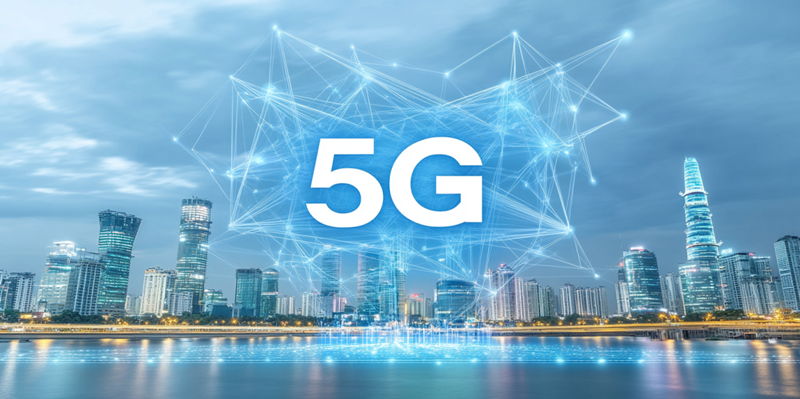Ericsson has secured a significant deal with Viettel, a leading telecom operator in Vietnam, to roll out the majority of a nationwide 5G radio access network (RAN). The collaboration not only focuses on deploying 5G but also entails modernizing Viettel’s 4G infrastructure, particularly in Hanoi and Vietnam’s northern and central regions. Utilizing the 2.6GHz spectrum for both 4G and 5G, Viettel aims to eventually implement a 5G Standalone (5G SA) network.
Key Objectives of the Ericsson-Viettel Partnership
Modernizing 4G and Rolling Out 5G Across Vietnam
Ericsson’s involvement in modernizing Viettel’s 4G network while rolling out 5G is a testament to the strategic importance of this collaboration. By utilizing the 2.6GHz spectrum for both 4G and 5G, Viettel not only aims to enhance current network performance but also ensures a smoother transition to the next generation of connectivity. This approach will enable Viettel to provide a more seamless and efficient user experience, addressing the growing demand for high-speed and reliable internet services across the country.
The deployment will primarily focus on Hanoi and the northern and central regions of Vietnam, marking a significant step forward for these areas in terms of digital infrastructure. This initiative comes at a time when digital transformation is increasingly becoming a priority for governments and businesses worldwide. As part of the agreement, Ericsson will supply state-of-the-art 5G RAN technology designed to improve network capacity, reduce latency, and provide enhanced coverage. The collaboration aims to make Vietnam a leader in 5G technology in the Southeast Asian region.
Enhancing User Experiences and Enterprise Features
The deployment marks a crucial milestone for Vietnam’s commercial 5G implementation. By prioritizing user experiences and enterprise features, the new network capability will propel the country into a new era of digital transformation. The 5G network is expected to bring about a variety of benefits, including faster download and upload speeds, lower latency, and the ability to connect more devices simultaneously. This is of particular importance in urban areas where network congestion is a frequent issue.
Moreover, the 5G network will introduce advanced features that will be particularly valuable for enterprises, such as network slicing. Network slicing enables the creation of multiple virtual networks within a single physical 5G network, allowing businesses to have customized and optimized connectivity tailored to their specific needs. This feature can greatly benefit sectors like healthcare, manufacturing, and smart cities, where reliable and high-speed internet is critical for operations. Rita Mokbel, head of Ericsson Vietnam, emphasized the potential of 5G to act as the backbone for a digitized economy, opening doors to innovative applications and services that were previously unimaginable.
Competitive Landscape and Industry Dynamics
Nokia’s Parallel 5G Deployment Partnership with Viettel
In a parallel move, Nokia has also secured a 5G deployment partnership with Viettel, providing cutting-edge equipment for what is described as Vietnam’s first nationwide 5G deployment covering 22 provinces. This dual partnership underscores the competitive landscape among telecom giants like Ericsson and Nokia, each vying for dominance in the burgeoning 5G market in Vietnam. While Ericsson focuses on the northern and central regions, Nokia’s role spans a wider geographical area, highlighting the complementary yet competitive nature of these collaborations.
Nokia’s involvement indicates that Viettel is committed to leveraging the expertise and technological strengths of multiple global players to achieve a comprehensive 5G rollout. This strategy not only mitigates risks but also accelerates the deployment process, ensuring that various parts of the country can benefit from next-generation connectivity sooner rather than later. The presence of both Ericsson and Nokia in Vietnam’s 5G landscape serves as a crucial endorsement of the nation’s potential as a hub for technological innovation and digital transformation.
Implications for Vietnam’s Digital Evolution
Ericsson has landed a major contract with Viettel, a prominent telecom operator in Vietnam, to deploy the bulk of a nationwide 5G radio access network (RAN). This partnership goes beyond just introducing 5G technology. It also includes upgrading Viettel’s existing 4G infrastructure, especially in Hanoi and the northern and central regions of Vietnam. By leveraging the 2.6GHz spectrum for both 4G and 5G services, Viettel plans to eventually transition to a 5G Standalone (5G SA) network.
The collaboration signifies a crucial step for Viettel as it aims to pave the way for more advanced mobile internet services in Vietnam. The use of the 2.6GHz spectrum will enable better coverage and higher data speeds, benefiting both 4G and 5G users. A 5G SA network will bring enhanced capabilities like ultra-low latency and greater reliability, making Viettel more competitive in the telecommunications arena. This move aligns with global shifts toward 5G, promising to boost Vietnam’s tech landscape significantly.

